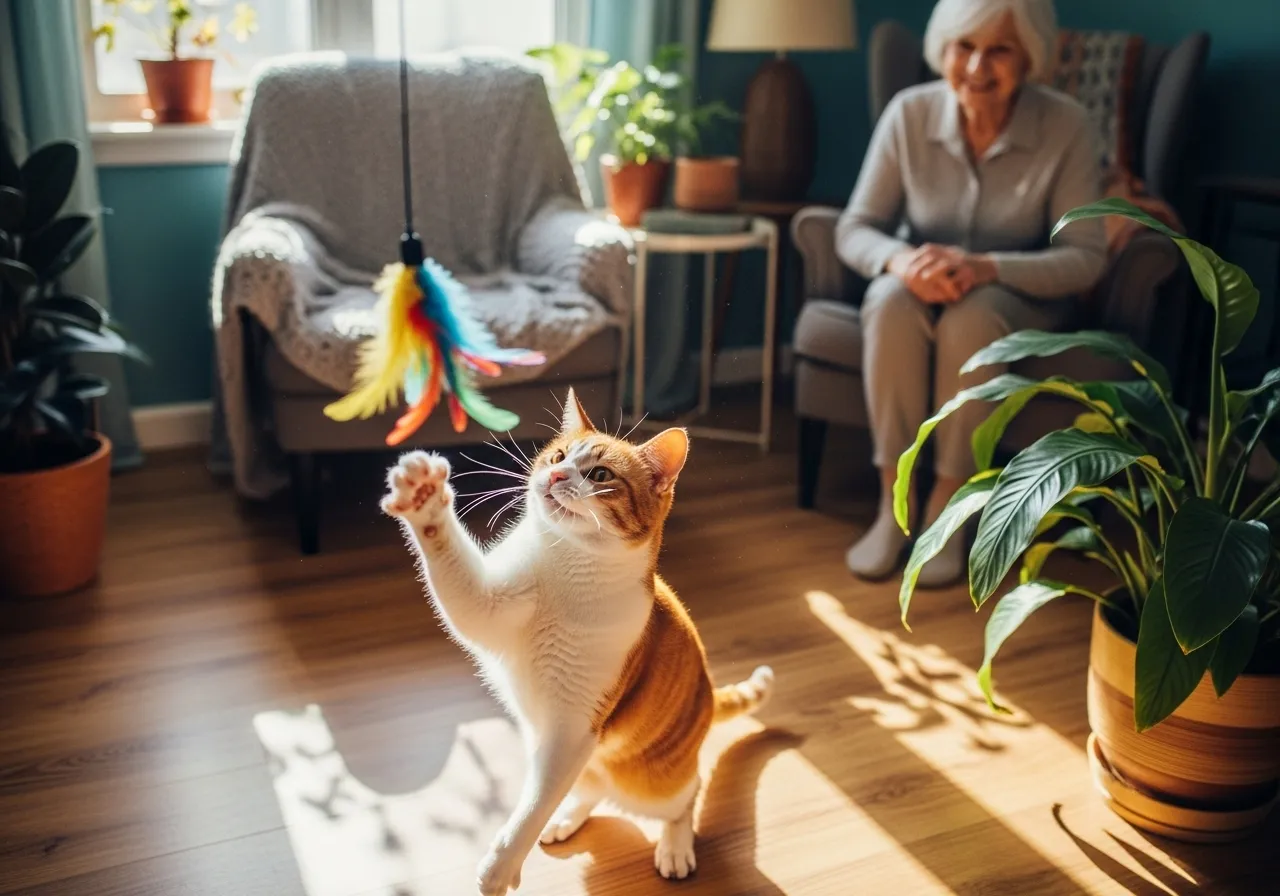
More Than a Walk: Enrichment for Senior Minds and Bodies
When we think about keeping a pet happy, our minds often jump to physical exercise. While daily movement is important, especially for dogs, it’s only one piece of the puzzle. Just as crucial is enrichment, which refers to activities that stimulate a pet’s mind and allow them to engage in their natural behaviors like sniffing, foraging, chewing, and problem-solving. For senior pets, whose physical abilities may be limited, mental enrichment is a fantastic way to keep them engaged, happy, and tired out in a positive way.
The wonderful thing about enrichment is that it doesn’t have to be complicated or strenuous, making it a perfect activity for seniors and their senior pets to enjoy together. It’s about quality of engagement, not quantity of motion. A few simple additions to a daily routine can make a world of difference.
For senior dogs, this could mean trading the food bowl for a puzzle feeder or a snuffle mat, which encourages them to use their powerful sense of smell to “hunt” for their meal. A gentle game of “find it,” where you hide a favorite treat under a cup or behind a pillow, can be a fun and engaging way to spend ten minutes. Even on a slow walk, allowing your dog ample time to just stop and sniff provides immense mental stimulation. That sniff is their way of reading the neighborhood news!
For senior cats, enrichment can be as simple as placing a bird feeder outside a window to create “cat TV.” A slow-moving wand toy dragged along the floor can entice a gentle pounce. Puzzle feeders designed for cats can turn mealtime into a fun challenge. The goal is simply to break up the day and give their clever minds something interesting to do.
Let’s look at a quick mini-example of an enrichment session:
Imagine it’s a rainy afternoon and you can’t take your 11-year-old terrier mix, Max, for his usual walk. Instead of him getting restless, you pull out an old muffin tin. You place a single piece of his kibble in a few of the cups and then cover all the cups with tennis balls or balled-up socks. You place it on the floor and say, “Find it, Max!” He spends the next five to ten minutes happily nudging the balls with his nose to find the hidden treasures. He’s using his brain, his nose, and he’s having fun. By the end, he’s just as content as if he’d gone for a short walk.
This kind of creative thinking helped Maria and her little dog, Gigi, build a beautiful bond.
Maria and Gigi: A Partnership of Play
Maria, who used a walker to get around her apartment, was lonely but convinced she couldn’t provide enough exercise for a dog. A volunteer at a local humane society understood her concerns but encouraged her to meet Gigi, a seven-year-old Poodle mix who was surrendered after her owner passed away. Gigi was calm and gentle, with a bright, intelligent spark in her eyes.
Maria fell in love but remained worried about Gigi’s needs. The adoption counselor introduced her to the concept of enrichment. She explained that for a small, clever dog like Gigi, mental exercise was just as important as physical. She sent Maria home not just with Gigi, but with a starter kit that included a puzzle toy and a snuffle mat.
This opened up a whole new world for them. Maria discovered that “playtime” didn’t have to mean chasing a ball in a park. She would sit in her favorite chair and roll a puzzle ball filled with treats across the floor for Gigi to nudge around. She taught Gigi a simple version of the shell game, hiding a treat under one of three plastic cups and letting Gigi sniff out the right one. Their apartment became a playground of gentle, stimulating games.
Gigi thrived. She was happy, content, and deeply bonded with Maria. Maria, in turn, felt a renewed sense of joy and purpose. She wasn’t just Gigi’s caregiver; she was her playmate and her partner. Their story shows that physical limitations don’t have to be a barrier to pet ownership. With a little creativity and a focus on enrichment, people of all mobility levels can provide a wonderfully fulfilling life for a shelter animal.














